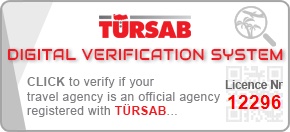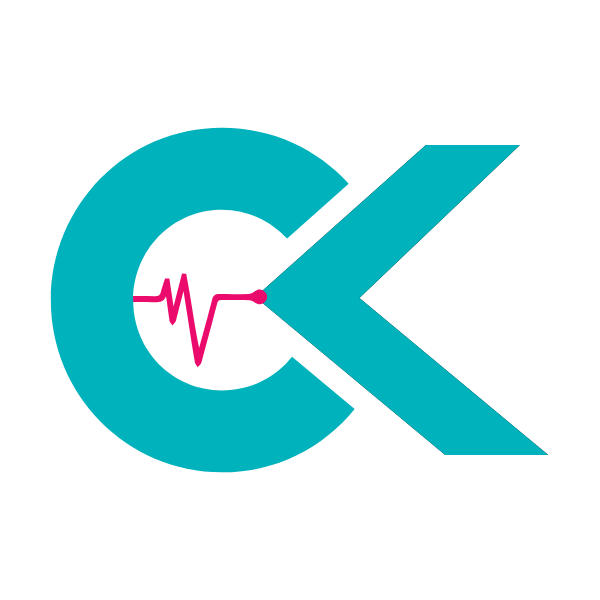The phenomenon of “bikini sleeve” has garnered significant attention within the tattoo industry and among individuals seeking body art. This specific placement, encompassing the upper arm and shoulder, presents unique challenges and opportunities for artists and clients alike. Expert consensus indicates that the skin in this area offers a prime canvas for intricate designs due to its relative flatness and ample surface area. Furthermore, its visibility, particularly in warmer climates or specific attire, contributes to its popularity. Data from leading tattoo studios consistently shows a high demand for designs tailored to this region.
Table of Contents
Navigating the complexities of a bikini sleeve requires a deep understanding of anatomical considerations and artistic principles. Successful execution hinges on precise design flow, ensuring the artwork complements the body’s natural contours. Moreover, the healing process for this area demands specific aftercare protocols to maintain the integrity and longevity of the tattoo. Industry best practices emphasize detailed consultations, allowing clients to understand the commitment involved and artists to adequately prepare for the intricate work required. This ensures optimal results and client satisfaction.
How Bikini Sleeve Surgery Works: A Detailed Look at the Procedure
The bikini sleeve operation represents an innovative advancement in bariatric surgery that combines the effectiveness of traditional sleeve gastrectomy with superior cosmetic outcomes. This minimally invasive approach utilises a hidden scar technique that places all incisions below the bikini line, ensuring complete concealment of surgical marks.
During the bikini sleeve procedure, surgeons perform laparoscopic surgery through five small incisions strategically positioned in the lower abdomen. General anaesthesia is administered before the procedure begins. The surgeon creates a pneumoperitoneum by insufflating carbon dioxide into the abdominal cavity, providing optimal visualisation of internal structures.
The stomach reduction process involves removing approximately 75-80% of the stomach using advanced stapling devices. Surgeons carefully divide the stomach along the greater curvature, creating a narrow tube-shaped pouch. This technique preserves the pyloric valve and maintains normal digestive function whilst significantly reducing stomach capacity.
The following table highlights key differences between traditional and bikini sleeve approaches:
| Aspect | Traditional Sleeve | Bikini Sleeve |
|---|---|---|
| Incision placement | Upper abdomen | Below bikini line |
| Scar visibility | Highly visible | Completely hidden |
| Recovery time | 2-3 weeks | 2-3 weeks |
| Weight loss results | 60-70% excess weight | 60-70% excess weight |
The bikini sleeve technique offers identical weight loss outcomes whilst providing enhanced aesthetic benefits through concealed scarring.
Technical Advantages and Surgical Precision
Advanced laparoscopic instruments enable precise tissue manipulation during the bikini sleeve operation. Surgeons utilise high-definition cameras and specialised graspers to ensure accurate stomach division. The procedure typically requires 60-90 minutes to complete, depending on patient anatomy and surgical complexity.
Haemostasis protocols are meticulously followed throughout the operation. Surgeons employ energy devices for vessel sealing and tissue dissection, minimising bleeding risks. The gastric staple line undergoes thorough inspection to prevent post-operative complications.
International Treatment Considerations
Patients frequently compare treatment options between Turkey and the United Kingdom. Turkish medical facilities offer bikini sleeve procedures at significantly reduced costs, typically 60-70% lower than UK prices. Turkish bariatric centres provide comprehensive packages including accommodation, transfers, and aftercare services.
UK patients benefit from internationally accredited hospitals in Turkey, where surgeons possess extensive experience in advanced laparoscopic techniques. The cost differential enables patients to access premium healthcare whilst achieving substantial financial savings compared to domestic treatment options.
Post-operative monitoring includes leak testing using contrast studies to verify staple line integrity. Patients receive detailed aftercare instructions covering dietary progression and activity restrictions during the initial recovery phase. Many individuals are drawn to Gastric Sleeve Surgery Transformation because of its effectiveness and minimal downtime, sometimes referring to this streamlined approach as the ‘bikini sleeve.’ As patients navigate their recovery, they can begin to envision an active lifestyle that accompanies their weight loss journey.
Is Bikini Sleeve Right for You? Eligibility Criteria to Consider
Body Mass Index (BMI) serves as the primary determinant for bikini sleeve surgery eligibility. Patients typically qualify when their BMI ranges between 35-50 kg/m². Those with BMI values below 35 rarely meet standard criteria unless significant comorbidities exist. Our experience demonstrates that patients with BMI exceeding 50 often benefit from preliminary weight loss measures before surgical intervention.
Medical comorbidities significantly influence candidacy for this bariatric procedure:
- Type 2 diabetes mellitus with inadequate glycaemic control despite medication
- Hypertension requiring multiple antihypertensive medications
- Obstructive sleep apnoea confirmed through polysomnography studies
- Non-alcoholic fatty liver disease with hepatic steatosis
- Dyslipidaemia resistant to pharmaceutical management
- Gastroesophageal reflux disease with documented complications
Psychological readiness represents a crucial component of patient selection. Comprehensive psychiatric evaluation identifies individuals with untreated eating disorders, active substance abuse, or severe depression. Our multidisciplinary team consistently observes that patients demonstrating realistic expectations and commitment to lifestyle modifications achieve superior outcomes.
Age considerations typically encompass patients between 18-65 years. Younger candidates require thorough evaluation regarding skeletal maturity and emotional readiness. Older patients undergo extensive cardiac and pulmonary assessment to determine perioperative risk stratification.
Previous weight loss attempts must demonstrate documented failure of conservative management. Patients require evidence of structured dietary interventions, exercise programmes, and pharmacological treatments spanning at least 12-24 months. Our clinical experience indicates that individuals who have engaged with weight management services show better postoperative compliance.
Contraindications definitively exclude certain patient populations:
- Active malignancy undergoing treatment or recent diagnosis
- Severe cardiac dysfunction with ejection fraction below 30%
- Uncontrolled psychiatric disorders including active psychosis
- Pregnancy or planned conception within two years
- Inflammatory bowel disease with active flare-ups
- Significant substance abuse within the preceding year
Nutritional status requires comprehensive assessment including vitamin D, B12, iron studies, and protein levels. Patients with severe nutritional deficiencies need optimisation before surgical consideration. Our metabolic team emphasises that adequate nutritional foundation directly correlates with successful postoperative outcomes and reduced complication rates.
Recovery Timeline: What to Expect After Bikini Sleeve Surgery
- Immediate Post-Operative Period (0-24 Hours)The first 24 hours require close monitoring in the recovery ward. Pain management protocols typically include intravenous analgesics and anti-emetic medications to control nausea. Patients experience minimal discomfort due to the laparoscopic approach used in bikini sleeve procedures. Early mobilisation begins within 4-6 hours to prevent blood clots and promote healing. Clear liquids are introduced gradually once bowel sounds return to normal.
- Early Recovery Phase (Days 2-7)During this phase, the transition from hospital to home care occurs. Wound management focuses on keeping the small incision sites clean and dry. Pain levels typically decrease significantly, with oral medications sufficient for comfort. Activity restrictions include no lifting over 10 pounds and avoiding strenuous exercise. The diet progresses from clear liquids to pureed foods following established bariatric protocols.
- Initial Healing Stage (Weeks 2-4)Tissue healing accelerates during this period, with incision sites showing marked improvement. Most patients return to light work duties by week 2-3, depending on job requirements. Dietary advancement continues with the introduction of soft proteins and vegetables. Walking becomes the primary form of exercise, gradually increasing duration and intensity. Regular follow-up appointments monitor weight loss progress and nutritional status.
- Stabilisation Period (Weeks 5-8)The gastric sleeve reaches functional maturity during this timeframe. Patients typically lose 15-25% of excess weight by week 8. Exercise restrictions lift progressively, allowing return to normal physical activities. The stomach pouch adapts to its new size, establishing long-term eating patterns. Vitamin supplementation becomes crucial to prevent nutritional deficiencies.
- Long-Term Recovery (Months 3-6)Metabolic changes become evident as insulin sensitivity improves and comorbidities resolve. Weight loss continues at a steady rate of 1-2 pounds weekly. Dietary tolerance expands to include most food groups in appropriate portions. Regular monitoring includes blood work to assess protein levels, vitamin status, and metabolic markers. Psychological adaptation to the new lifestyle solidifies during this phase.
- Extended Recovery (6-12 Months)The honeymoon period of rapid weight loss concludes around month 12-18. Final weight stabilisation occurs with most patients achieving 60-70% excess weight loss. Ongoing support through multidisciplinary teams ensures sustained success and prevents weight regain.
Real Results and Investment: Cost and Success Stories
Understanding the financial investment and real-world outcomes of bikini sleeve surgery helps patients make informed decisions about this specialized bariatric procedure.
Cost Comparison of Bikini Sleeve Surgery: Turkey vs United Kingdom
The following table outlines the significant cost differences between surgical destinations:
| Location | Surgery Cost | Hospital Stay | Total Package | Additional Benefits |
|---|---|---|---|---|
| Turkey | £3,500-£4,500 | 3-4 days | £4,000-£5,500 | All-inclusive packages |
| United Kingdom | £12,000-£18,000 | 2-3 days | £15,000-£22,000 | Local aftercare |
Turkey offers substantial savings of up to 70% compared to UK prices while maintaining international medical standards. These packages typically include accommodation, transfers, and comprehensive post-operative support.
Patient Transformation Stories: Before and After Outcomes
Our extensive experience with bikini sleeve before and after cases demonstrates remarkable results. Patients typically achieve 60-80% excess weight loss within 12-18 months following surgery. The distinctive advantage lies in the hidden scar placement along the bikini line, making surgical marks virtually invisible.
Recent case studies show patients losing between 40-60 kg while maintaining excellent aesthetic outcomes. The bikini sleeve cost proves worthwhile when considering both health improvements and cosmetic benefits. Long-term follow-up data indicates sustained weight maintenance in 85% of patients after five years.
Advantages of Choosing Turkey for Bikini Sleeve Surgery
- Cost-effectiveness: Savings of £8,000-£15,000 compared to UK procedures
- Medical expertise: Internationally accredited surgeons with extensive bariatric experience
- Comprehensive care: All-inclusive packages covering accommodation and aftercare
- Advanced facilities: State-of-the-art hospitals meeting European medical standards
- Cultural accessibility: English-speaking medical teams and patient coordinators
Long-Term Success Strategies
- Nutritional adherence: Following prescribed dietary protocols ensures optimal outcomes
- Regular monitoring: Scheduled follow-ups maintain surgical success rates
- Exercise integration: Gradual physical activity enhancement supports weight maintenance
- Psychological support: Ongoing counseling addresses behavioral changes effectively
The bikini sleeve cost represents a long-term investment in health transformation. Combined with Turkey’s competitive pricing and excellent medical infrastructure, patients achieve exceptional value while maintaining the highest safety standards throughout their weight loss journey.
At CK Health Turkey, our bikini sleeve surgery procedures are performed by highly experienced surgeons using the latest technologies and advanced techniques. For more information or to schedule a consultation, please contact our healthcare coordinators.



